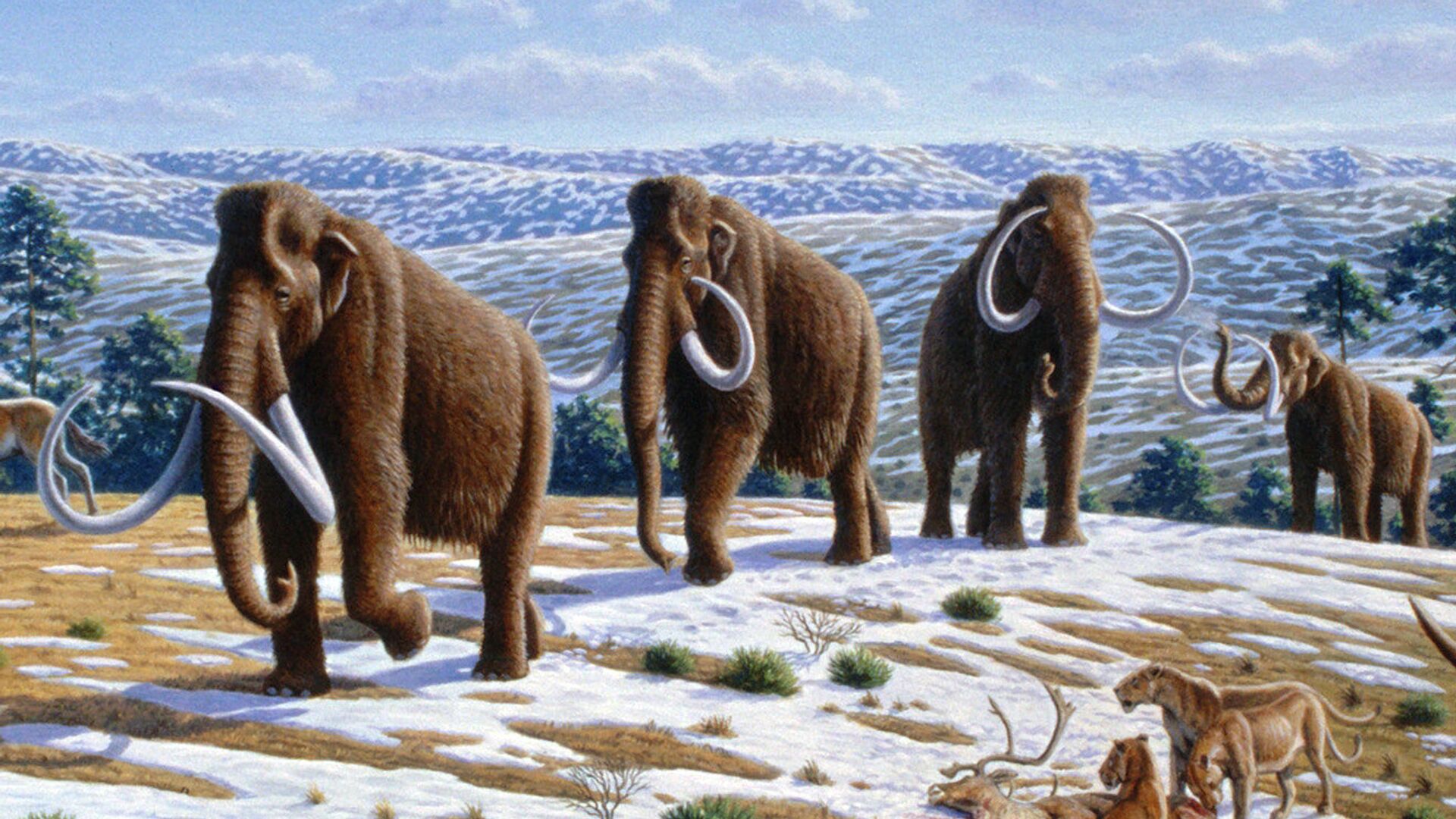https://sputnikglobe.com/20220304/back-from-extinction-augmented-reality-gives-a-glimpse-at-ice-age-era-animals-1093595165.html
Back From Extinction: Augmented Reality Gives a Glimpse at Ice Age-Era Animals
Back From Extinction: Augmented Reality Gives a Glimpse at Ice Age-Era Animals
Sputnik International
Mammoths, sabre-toothed cats, steppe bison, mastodons - these and many other animals from ancient times are long extinct, with no chance for people to observe... 04.03.2022, Sputnik International
2022-03-04T17:45+0000
2022-03-04T17:45+0000
2022-03-04T17:45+0000
science & tech
ice age
animals
augmented reality
https://cdn1.img.sputnikglobe.com/img/104368/47/1043684782_0:30:1320:773_1920x0_80_0_0_adfc882f9a94d8b0541b628efcfdd957.jpg
Extinct animals that inhabited the Earth during the Ice Age - an epoch that began about 2.6 million years ago and ended 11,700 years ago - have been brought back to life, albeit in the augmented reality.Three-dimensional (3D) models of such animals as mammoths, ancient bison, ground sloths, sabre-toothed cats and mastodons have been created by the team in La Brea Tar Pits - a palaeontological research site in urban Los Angeles. The site is also a museum; and the goal was to bring the extinct Ice Age animals back to virtual life for visitors to enjoy.However, since there are no accurate models of such creatures, the La Brea Tar Pits team have been forced to come up with their own ones - so-called "paleoart".People can view models of 13 animals in several states, with the animals able to roar, move, and stand. All the animals of which models have been made were discovered in the La Brea Tar Pits, including the sabre-toothed cat, dire wolf, and teratorn. To bring the extinct animals back to life, the scientists used all available information about the species: starting from photos of skeletons and ending up with videos depicting the behaviour of their modern-day descendants.The models were then transferred to an augmented reality app that would allow museum visitors to transport themselves back to the ancient glacier age by simply holding up their phone on museum grounds. According to Science, one experience is to watch a model of a young mammoth falling into a tar pit, with scientists then explaining how many animals met their end in the bubbly asphalt wells thousands of years ago.
Sputnik International
feedback@sputniknews.com
+74956456601
MIA „Rossiya Segodnya“
2022
News
en_EN
Sputnik International
feedback@sputniknews.com
+74956456601
MIA „Rossiya Segodnya“
Sputnik International
feedback@sputniknews.com
+74956456601
MIA „Rossiya Segodnya“
science & tech, ice age, animals, augmented reality
science & tech, ice age, animals, augmented reality
Back From Extinction: Augmented Reality Gives a Glimpse at Ice Age-Era Animals
Mammoths, sabre-toothed cats, steppe bison, mastodons - these and many other animals from ancient times are long extinct, with no chance for people to observe them in a zoo or wildlife. But new technologies may still let us take a look at pre-Ice Age fauna.
Extinct animals that inhabited the Earth during the Ice Age - an epoch that began about 2.6 million years ago and ended 11,700 years ago - have been brought back to life, albeit in the augmented reality.
Three-dimensional (3D) models of such animals as mammoths, ancient bison, ground sloths, sabre-toothed cats and mastodons have been created by the team in La Brea Tar Pits - a palaeontological research site in urban Los Angeles. The site is also a museum; and the goal was to bring the extinct Ice Age animals back to virtual life for visitors to enjoy.
However, since there are no accurate models of such creatures, the La Brea Tar Pits team have been forced to come up with their own ones - so-called "paleoart".
People can
view models of 13 animals in several states, with the animals able to roar, move, and stand. All the animals of which models have been made were discovered in the La Brea Tar Pits, including the sabre-toothed cat, dire wolf, and teratorn.
"We adopted a stylised low polygon aesthetic for these 3D, animated virtual models both to support learning objectives and to optimise performance for smartphone-based augmented reality experiences," the La Brea Tar Pits team said, describing their paleoart.
To bring the extinct animals back to life, the scientists used all available information about the species: starting from photos of skeletons and ending up with videos depicting the behaviour of their modern-day descendants.
The models were then transferred to an augmented reality app that would allow museum visitors to transport themselves back to the ancient glacier age by simply holding up their phone on museum grounds. According to
Science, one experience is to watch a model of a young mammoth falling into a tar pit, with scientists then explaining how many animals met their end in the bubbly asphalt wells thousands of years ago.

